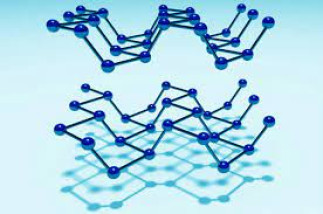Intrinsic optical signatures of layered materials: the case of hexagonal boron nitride and black phosphorus
Léonard Schué
Département de physique et chimie
Université de Montréal
Présentation en anglais
Vidéoconférence, Zoom #: 821 4868 3936 (Zoom link)
Lorsque demandé, indiquer 'Huit Quatre Cinq Deux' en chiffre.
Abstract: Over the past two decades, the growing family of 2D materials has attracted considerable attention in the physics community offering new perspectives for electronic and optoelectronic applications. In this talk, the interplay between structural and optical signatures will be examined for two particular members of the family: hexagonal boron nitride (hBN) and black phosphorus (BP).
Hexagonal boron nitride, a wide band gap semiconductor (Eg ∼6 eV) with a honeycomb lattice quasi identical to that of graphene, has received increasing interest for deep-UV light emission applications [1]. A thorough understanding of its intrinsic properties is therefore highly desirable towards the fabrication of high-performance devices. The results I will present here, provide new insights into the origin of the strong luminescence efficiency in bulk hBN through a quantitative analysis of the cathodoluminescence (CL) emission measured on various hBN sources and two other wide band gap semiconductors [2].
Black phosphorus is a low-symmetry semiconductor which exhibits strong anisotropic properties due to its puckered layer structure [3]. While recent investigations on few-layer crystals have explored the in-plane anisotropy, much less attention has been given to the out-of-plane direction. Here, I will discuss the influence of the band structure anisotropy on the optical response of bulk BP through polarization-resolved photoluminescence (PL) and Raman scattering experiments performed along the three high symmetry directions (zigzag, armchair and out-of-plane) [4].
References
[1] Watanabe, K., Taniguchi, T., Niiyama, T., Miya, K., & Taniguchi, M., Nature Photonics, 3 (2009) 591-594.
[2] Schué, L., Sponza, L., Plaud, A., Bensalah, H., Watanabe, K., Taniguchi, T., Ducastelle, F., Loiseau, A., & Barjon, J., Phys. Rev. Lett., 122 (2019) 067401.
[3] Qiao, J., Kong, X., Hu, Z.-H., Yang, F., & Wei, J., Nature Communications, 5 (2014) 4475.
[4] Schué, L., Goudreault, F. A., Righi, A., Resende, G. C., Lefebvre, V., Godbout, E., Tie, M., Ribeiro, H. B., Heinz, T. F., Pimenta, M. A., Côté, M., Francoeur, S. & Martel, R., Nano Letters, Accepted (2022).

